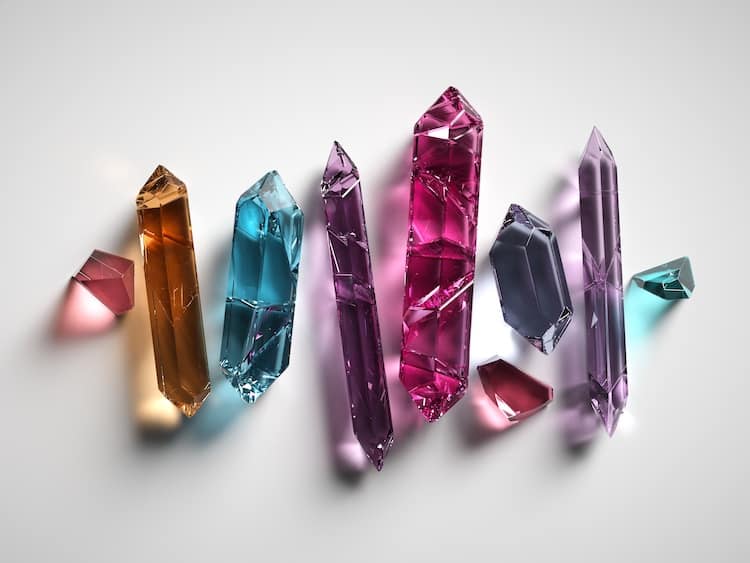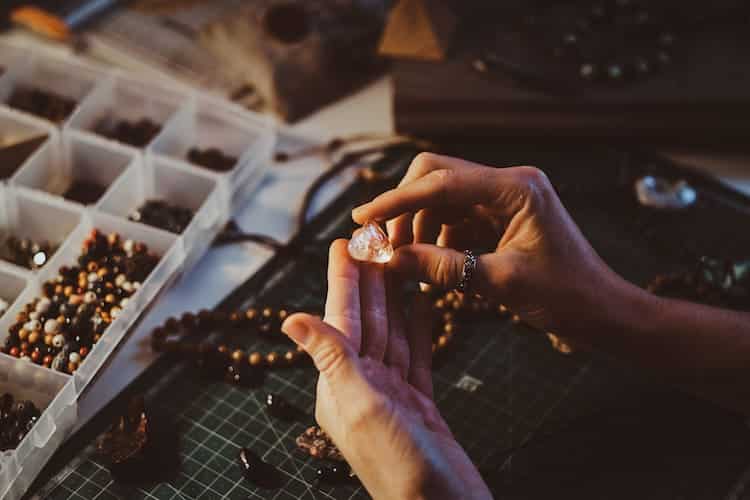The world of gemstones might seem, to many, to be filled with whimsy and fantasy. People think of gemstones and imagine young girls swooning over jewelry or bohemians dancing around a fire with crystals—but there is so much more to gemstones than what pop culture would have you believe.
Firstly, not only are there numerous uses for gemstones that date back centuries, they have their own rich history and place in this world and their own unique geometry that sets them apart from regular stones and shapes.
To show you just what we mean by geometry, here is a guide to walk you through the beautiful geometry of gemstones.

The Cut
Any gemstone cutter knows the basics of a gemstone design, essentially there is this concept many in America use that is called the ‘three bears’ of gemstone geometry.
- Papa bear is very big on top but too shallow, causing light to pass through the stone instead of bouncing off its faces.
- Next is mama bear who is so deep that light ricochets off the first face and hits the second facet head on, causing light to leak out the bottom. Both of these make for rather lifeless stones.
- The final cut is baby bear, which is just right. The angles are specifically placed so that the light coming into the stones makes what cutters call ‘a double-bank-shot.’ The light hits the face and bounces back to the eye of whoever is looking at it. This a shiny, beautiful gemstone!
These are the basic ideas cutters follow when designing and cutting a ring, for example. If you have ever heard of anyone talk about the cut and size of a ring, this is pretty much what they are talking about. The clearer the cut, the more dazzle and shine the gemstone will have.
This covers the more practical side of gemstone geometry, these kinds of stones are the ones you usually see in jewelry stores, but there are other kinds of gemstones—one of the most popular these days is the quartz crystal.
Quartz
The geometry of quartz is very closely linked to the healing properties many believe these crystals to have. Geometry comes into play regarding how to use them, where to place them, when to use them, and how to cleanse them. The history and method behind these crystals is complex, and the alleged healing properties of quartz are as interesting as they are debated, but we have narrowed the information down to some basic ideas for you.

Structure
The basic structure of a quartz consists of what is called spiraling chains of tetrahedrons—a triangular, pyramid-like shape—that are connected together to create a more regular framework of connecting tetrahedral helixes.
In sacred geometry, this shape was considered the most fundamental and basic and was thought of by Western standards to represent the three-dimensional manifestation of the five elements of nature: fire, air, water, earth, and what many call either space or spirit.
There are seven kinds of shapes, or “systems,” in which crystals can form, the other six aside from trigonal being cubic, hexagonal, orthorhombic, tetragonal, triclinic, and monoclinic. You have probably seen these gems come in many of these forms, but the one most seen in jewelry and spiritual usage is the hexagonal system.
According to Steno’s law of geometric crystallization, quartz display in hexagonal crystalline systems that forms six faces and creates a hexagonal crystal that can come in varying lengths. Other gems such as emerald, aquamarine, ruby, and sapphires exhibit similar structures.
The geometry of the quartz gemstone combines the qualities of tetrahedron and the hexagon as a unique structure. As mentioned before, many believe the tetrahedron expresses different elements, such as fire and spirit, which work with the forces of will and the power of manifestation.
The hexagon is said to express the internal relationship of spirit and matter, the upward point represents spirit and the downward point represents material realities. They each exhibit and manifest the idea of harmony, function, and order and are used in spiritual practices for this purpose.
Quartz and Jewelry
Quartz makes a beautiful gemstone as it is durable, hard, and can be polished up well. Popular kinds of quartz used in making jewelry are rose quartz, aventurine, amethyst, citrine and smoky quartz. These gemstones have such an interesting and unique quality to them that makes them stand out from other gemstones and are used very commonly to make spiritual jewelry and are even used on skin during beauty routines.
In Summary
The structure and geometry of gemstones is fascinating to say the least. Everything that makes up a gemstone is precise, but all of it comes together to form unique and beautiful gems and crystals that we use in our jewelry, spiritual practices, and more every day.
